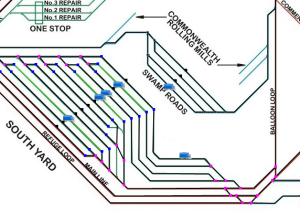Introduction:
Rail and intermodal terminals play a crucial role in the efficient movement of goods, connecting different modes of transportation and facilitating seamless logistics operations. Effective planning and optimization of these terminals are essential for maximizing throughput, minimizing delays, and improving overall operational efficiency. While traditional tools like Excel have long been used for planning, they often fall short in capturing the complexity and dynamics of terminal operations. Fortunately, simulation modeling offers a more powerful and comprehensive solution, enabling users to gain valuable insights into system behavior, apply variation, and model network dynamics over time. In this article, we will explore the benefits of simulation modeling over Excel for terminal planning and delve into its various applications.
Understanding Simulation Modeling:
Simulation modeling is a technique that uses computer-based models to replicate the behavior of real-world systems. It involves creating a virtual environment that simulates the interactions between different components of the system, capturing their behaviors and relationships. By running simulations, analysts can observe how the system behaves under various scenarios and gain insights into its performance.
Benefits of Simulation Modeling for Rail and Intermodal Terminals:
Simulation modeling offers several advantages over traditional tools like Excel when it comes to terminal planning.
- Capturing Variation and Uncertainty:
Terminal operations are subject to various sources of variation, such as fluctuating demand, weather conditions, and equipment failures. Unlike Excel, simulation models can incorporate this variation and provide a more accurate representation of real-world scenarios. By considering these uncertainties, analysts can assess the robustness of their plans and make informed decisions that account for potential disruptions. - Modeling Network Dynamics Over Time:
Terminal operations are not static but rather dynamic in nature, with multiple interconnected processes occurring simultaneously. Simulation models allow users to model the network over time, capturing the flow of goods, the movement of vehicles, and the interactions between different processes. This dynamic perspective enables analysts to understand how delays and queueing impact the overall system, identify potential bottlenecks, and optimize resource allocation accordingly.
Applications of Simulation Modeling in Rail and Intermodal Terminals:
Simulation modeling finds a wide range of applications in terminal planning, offering valuable insights and facilitating data-driven decision-making. Here are some key applications:
- Capacity Analysis:
Simulation models can assess the capacity of rail and intermodal terminals to handle varying volumes of goods. By simulating different demand scenarios, analysts can identify potential bottlenecks and capacity constraints. This information allows them to make informed decisions regarding infrastructure investments, resource allocation, and process improvements to enhance the terminal’s throughput. - Throughput Optimization:
Simulation modeling enables analysts to evaluate different operating strategies and identify the most efficient allocation of resources within a terminal. By simulating various scenarios, such as changes in equipment configurations or process modifications, analysts can optimize the throughput and minimize congestion. This optimization can lead to improved service levels, reduced costs, and enhanced customer satisfaction. - Scenario Analysis:
Simulation models provide a powerful tool for conducting scenario analysis in terminal planning. Analysts can simulate and compare the impact of different operational changes, such as introducing new equipment, modifying layouts, or adjusting scheduling parameters. By assessing the consequences of these changes in a virtual environment, decision-makers can evaluate their feasibility, understand potential risks, and make informed choices that minimize disruption and maximize efficiency.
Conclusion:
Simulation modeling offers a transformative approach to terminal planning in rail and intermodal operations. By surpassing the limitations of Excel, rail terminal simulation models provide a more accurate representation of complex systems, allowing analysts to incorporate variation, model network dynamics over time, and understand the impact of delays and queueing. The applications of simulation modeling in capacity analysis, throughput optimization, and scenario analysis empower decision-makers to make informed choices, optimize resource allocation, and enhance operational efficiency. Embracing simulation modeling as a planning tool enables rail and intermodal terminals to stay ahead in an increasingly dynamic and competitive logistics landscape.
InterDynamics have been helping clients improve their understanding of their logistics networks for over 30 years with their simulation software Planimate. Contact us to discuss your operation and how we can help maximise your returns.
